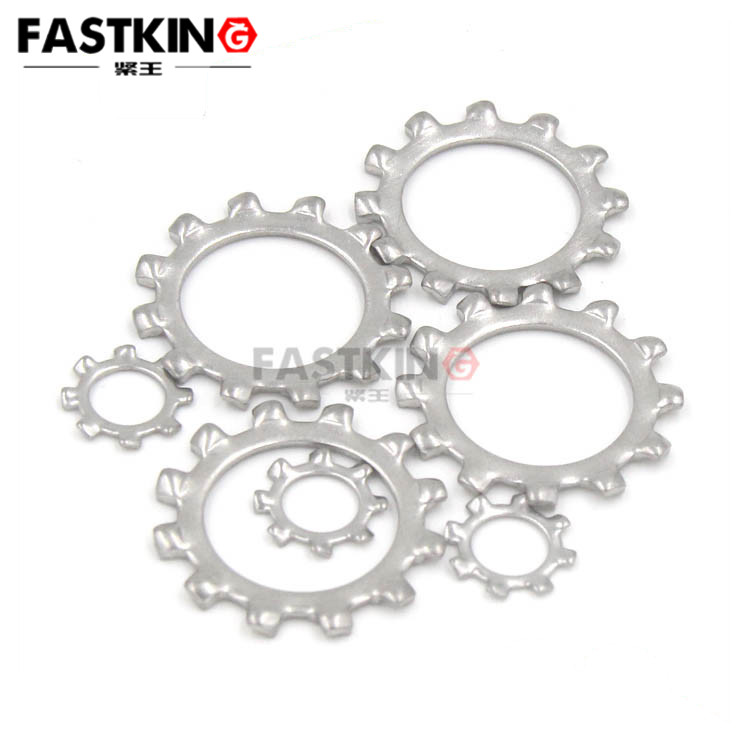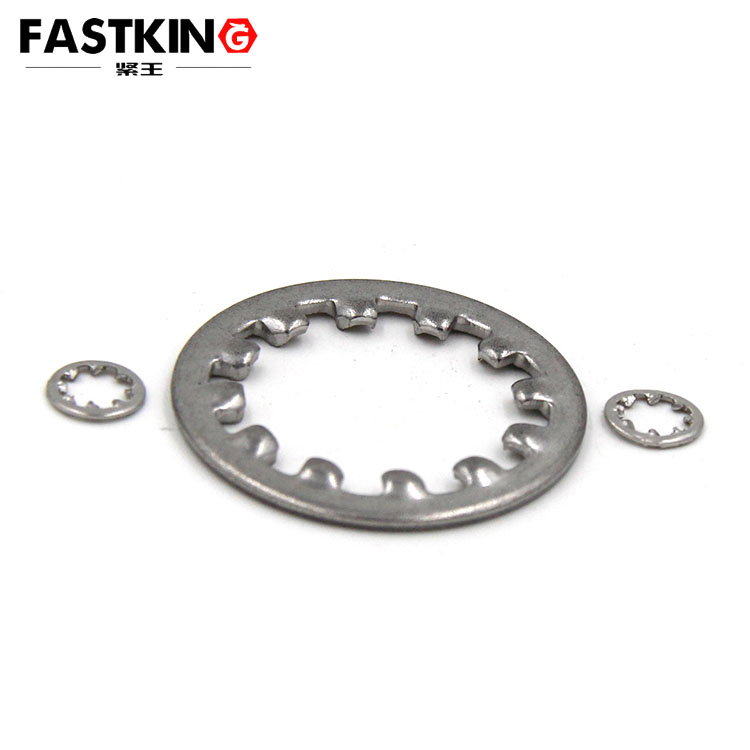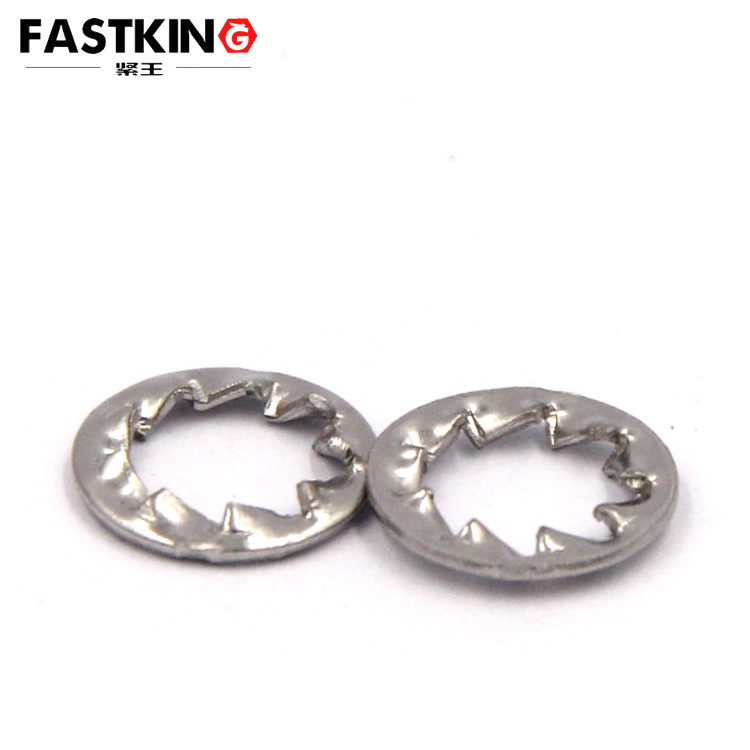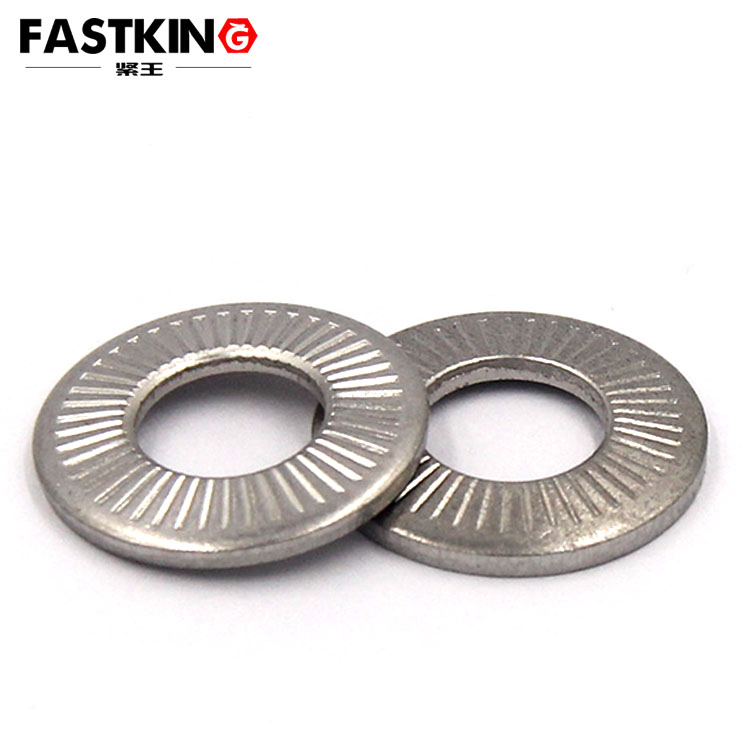- ZHUHAI JIALI HARDWARE CO.,LTD.
- +86-756-8586520
Corrugated spring washer din128
- Product description:Wave washer, also known as wave washer, is a regular wave shaped circular sheet. Generally used to prevent loosening, slow impact, need to have good elasticity and impact resistance and other properti
Core Foundations of Wave Spring Washers: Standards and Definition
1. Executive Standards and Core Positioning
- International Standard: DIN128 (German Industrial Standard, which specifies the dimensional specifications, tolerance ranges, and mechanical performance requirements for wave spring washers);
- Chinese National Standard: GB/T 7246-1987 Wave Spring Washers (equivalently adopting relevant international standards, specifying the types, parameters, and technical conditions of washers, applicable to domestic industrial scenarios);
- Product Definition: A wave spring washer is an elastic component that achieves cushioning, preloading, and vibration damping functions through the "elastic deformation of its wave-shaped structure". Compared with ordinary spring washers (e.g., GB93 open coil spring washers), its advantages lie in: providing stable elastic force within a small compression stroke and releasing elastic force more smoothly. It is suitable for scenarios with limited space and high requirements for elastic force uniformity (such as bearing preloading and internal connections of precision instruments).
2. Universal Characteristics and Material Selection
Regardless of the type, wave spring washers share the following universal characteristics, and material selection should be based on operating conditions:
- Universal Advantages: ① Small installation space (thickness usually only 0.3-3mm, much thinner than ordinary spring washers); ② Controllable elastic force (realizing different elastic force outputs by adjusting wave height and number of layers); ③ Vibration and noise reduction (elastic deformation can absorb vibration energy and reduce component operation noise);
- Common Materials:
- Carbon Steel (e.g., 65Mn, 50CrV4): Possesses high elastic limit, suitable for dry and normal-temperature working conditions (such as ordinary mechanical bearing preloading), with low cost;
- Stainless Steel (e.g., 304, 316): Excellent corrosion resistance, suitable for humid and salt-spray environments (such as outdoor electronic equipment, marine platform instruments);
- Copper Alloys (e.g., brass, phosphor bronze): Good electrical and thermal conductivity, along with certain elasticity, suitable for the electronic and electrical field (such as circuit board connections, buffering of conductive components).
II. Three Types of Wave Spring Washers: Structure, Performance and Application Adaptation
According to GB/T 7246-1987 and DIN128 standards, wave spring washers are mainly divided into Type WG (open type), Type WL (lap-joint type), and Type WN (multi-layer overlapping type). The three types have significant differences in structural design, which determine their applicable scenarios.
1. Type WG Wave Spring Washer: Flexible Adaptation of Open Type
(1) Structural Features
Type WG has an open wave structure. The main body of the washer is curved in a wave shape, with an open gap at the edge (gap width varies by specification, usually 1-3mm), and no closed or lap-joint design. Its wave height (distance between wave crest and wave trough) is small (generally 0.2-1mm), the elastic force changes smoothly within a single compression stroke, and the open structure endows it with a certain radial flexibility, enabling adaptation to slight installation deviations.
(2) Core Performance and Applicable Scenarios
-
Core Performance: Convenient installation (the open design allows direct clamping onto bolts or shaft components without full insertion), good radial fault tolerance (can compensate for slight dimensional deviations of connected parts), strong adaptability to small spaces;

- Typical Applications:
- Bearing Preloading: Install Type WG washers between small motor bearings, precision gearbox bearings and housings. Through slight elastic force, continuous preloading force is applied to the bearings, reducing radial clearance during bearing operation, lowering noise (can reduce operating noise by 5-10dB), and improving rotation accuracy (e.g., machine tool spindle bearings);
- Electronic and Electrical Buffering: Use ultra-thin Type WG stainless steel washers between the internal circuit boards and casings of smartphones and laptops. They can not only buffer the impact of casing stress on circuit boards but also avoid short-circuit risks caused by direct contact between metal components;
- Ordinary Mechanical Positioning: Between the rotor components and end caps of small pumps and valves, the elastic support of Type WG washers ensures stable axial positioning of the rotor during operation and reduces axial movement.
2. Type WL Wave Spring Washer: Stable Output of Lap-Joint Type
(1) Structural Features
Type WL has a lap-joint closed structure. The main body of the washer is also wave-shaped, but the edges adopt a lap-joint design (one end covers the other, with no obvious open gap), forming an approximately closed ring. Compared with Type WG, its wave height is slightly higher (0.3-1.5mm), and due to the closed structure, it has higher radial stiffness, more stable elastic force output, and is less prone to elastic force attenuation caused by radial deviation.
(2) Core Performance and Applicable Scenarios
- Core Performance: High stability of elastic force (closed structure reduces the impact of radial deformation), good fatigue resistance (lap-joints disperse stress to avoid local fracture), suitable for medium-low load scenarios;
- Typical Applications:
- Medium-Sized Bearing Vibration Damping: In the installation of automobile generator bearings and air-conditioning compressor bearings, Type WL washers can replace ordinary spring washers. Through more uniform elastic force, preloading force is applied to the bearings, resisting vibration during engine or compressor operation, and extending bearing service life (by 20%-30%);
- Instrument Calibration: Between the internal transmission components (e.g., pointer shafts, gear sets) of precision pressure gauges and flowmeters, Type WL copper alloy washers are used. Their stable elastic force ensures tight fitting of transmission components, reducing measurement errors caused by elastic force fluctuations;
- Household Appliance Component Buffering: Between the drum bearings of washing machines, refrigerator compressor motor bearings and brackets, Type WL stainless steel washers can absorb vibration during operation, while resisting corrosion in humid environments, avoiding component loosening caused by washer failure.
3. Type WN Wave Spring Washer: High Elastic Force Output of Multi-Layer Overlapping Type
(1) Structural Features
Type WN has a multi-layer wave crest overlapping structure, composed of 2-5 layers (usually 2-3 layers) of single-layer wave washers. The wave crests and troughs between layers are staggered or aligned (depending on design requirements), and the overall thickness is larger than that of Type WG and Type WL (usually 1-3mm). Due to the superposition of multiple layers of materials, its elastic force within the same compression stroke is much higher than that of the previous two types, and the elastic force release curve is smoother (K-value fluctuation range < 5%), enabling the dual requirement of "high elastic force + uniform output".
(2) Core Performance and Applicable Scenarios
- Core Performance: High elastic force (2-3 times that of a single layer, depending on the number of layers), good uniformity of elastic force (multi-layer superposition offsets elastic force fluctuations of a single layer), strong load-bearing capacity (can withstand large axial loads);
- Typical Applications:
-
Heavy Machinery Bearing Preloading: In the installation of reducer bearings for mining machinery and hydraulic motor bearings for construction machinery, multi-layer Type WN washers can provide sufficient preloading force, resisting the increase of bearing clearance under heavy loads and avoiding component wear (e.g., excavator slewing bearings);

- High-Pressure Equipment Sealing Assistance: Between the sealing covers and flanges of high-pressure valves and pressure vessels, Type WN washers can be used with sealing gaskets. Their stable elastic force ensures tight fitting of the sealing surface, enhancing sealing effect and reducing the risk of high-pressure medium leakage;
- Large Motor Vibration Damping: Between the stators and bases of large industrial motors (e.g., power plant generators), Type WN stainless steel washers are used. Their high elastic force and smooth elastic force output absorb axial vibration during motor operation, while resisting high temperatures (304 stainless steel can withstand temperatures below 200℃) and oil pollution corrosion during motor operation.
III. Key Selection Factors: Type and Parameter Matching Based on Operating Conditions
When selecting wave spring washers, the following core dimensions should be considered to ensure accurate adaptation to actual needs:
- Space Constraints: For extremely small installation spaces (thickness < 1mm), prioritize Type WG; for moderate space requiring stable elastic force, select Type WL; for space allowing high elastic force, choose Type WN;
- Load Requirements: For low loads (axial force < 50N), select Type WG; for medium loads (50-200N), select Type WL; for high loads (> 200N), choose Type WN (load capacity can be improved by increasing the number of layers);
- Environmental Characteristics: Select carbon steel for dry and normal-temperature conditions, stainless steel for humid/salt-spray environments, and copper alloys for electronic conductive scenarios;
- Installation Accuracy: For slight dimensional deviations, select Type WG (open fault tolerance); for high accuracy requirements, choose Type WL or Type WN (stable closed/multi-layer structure).





